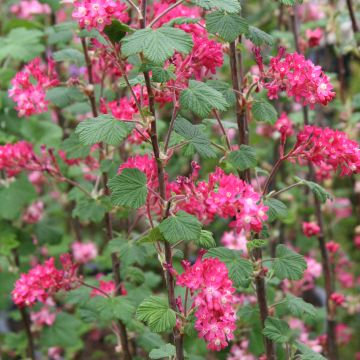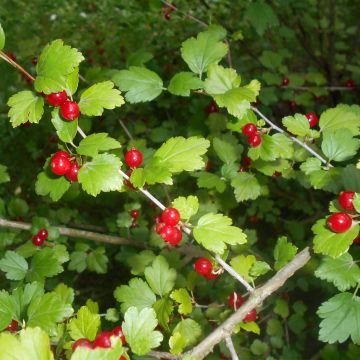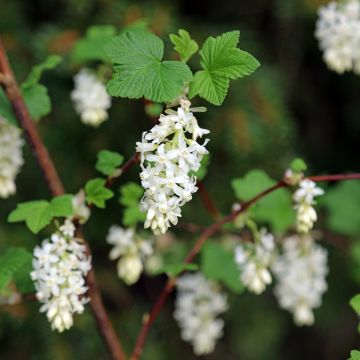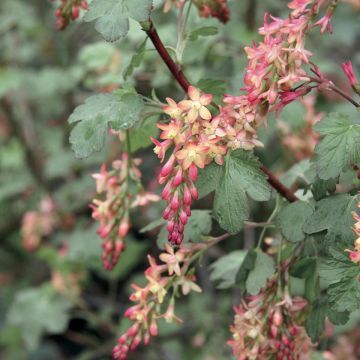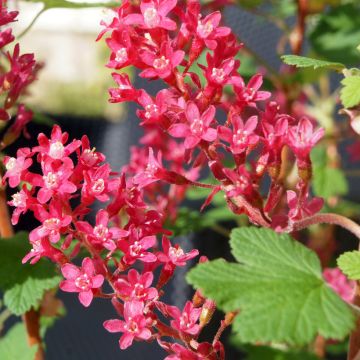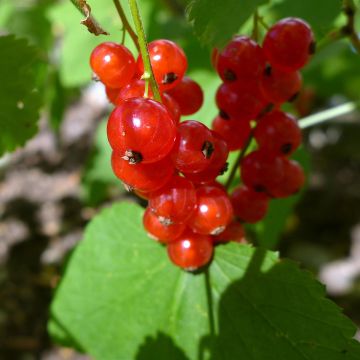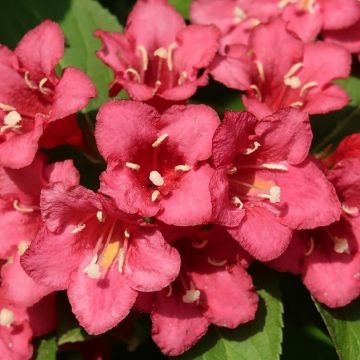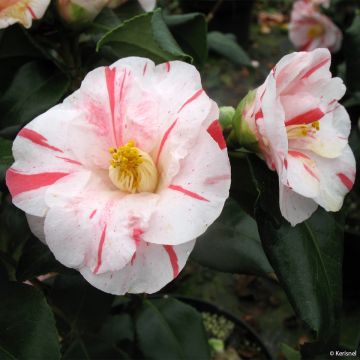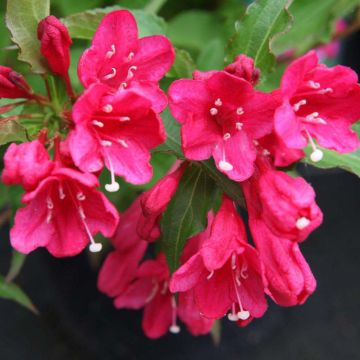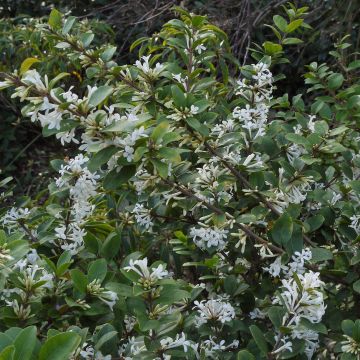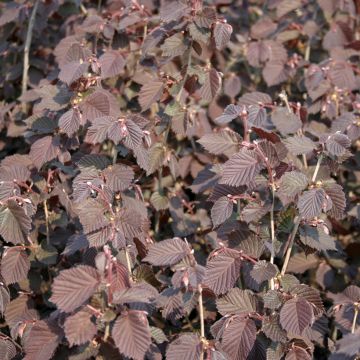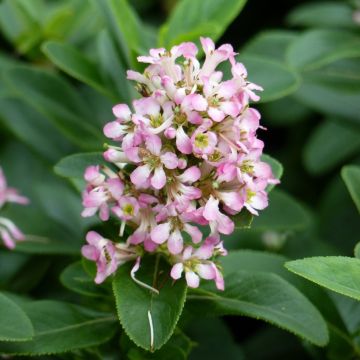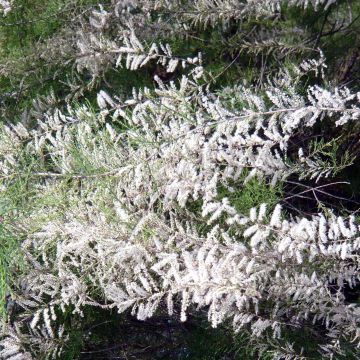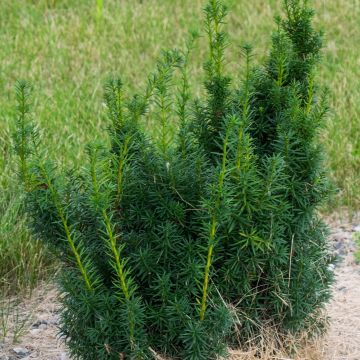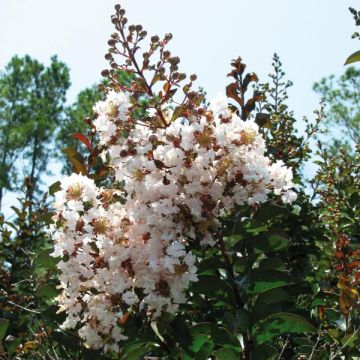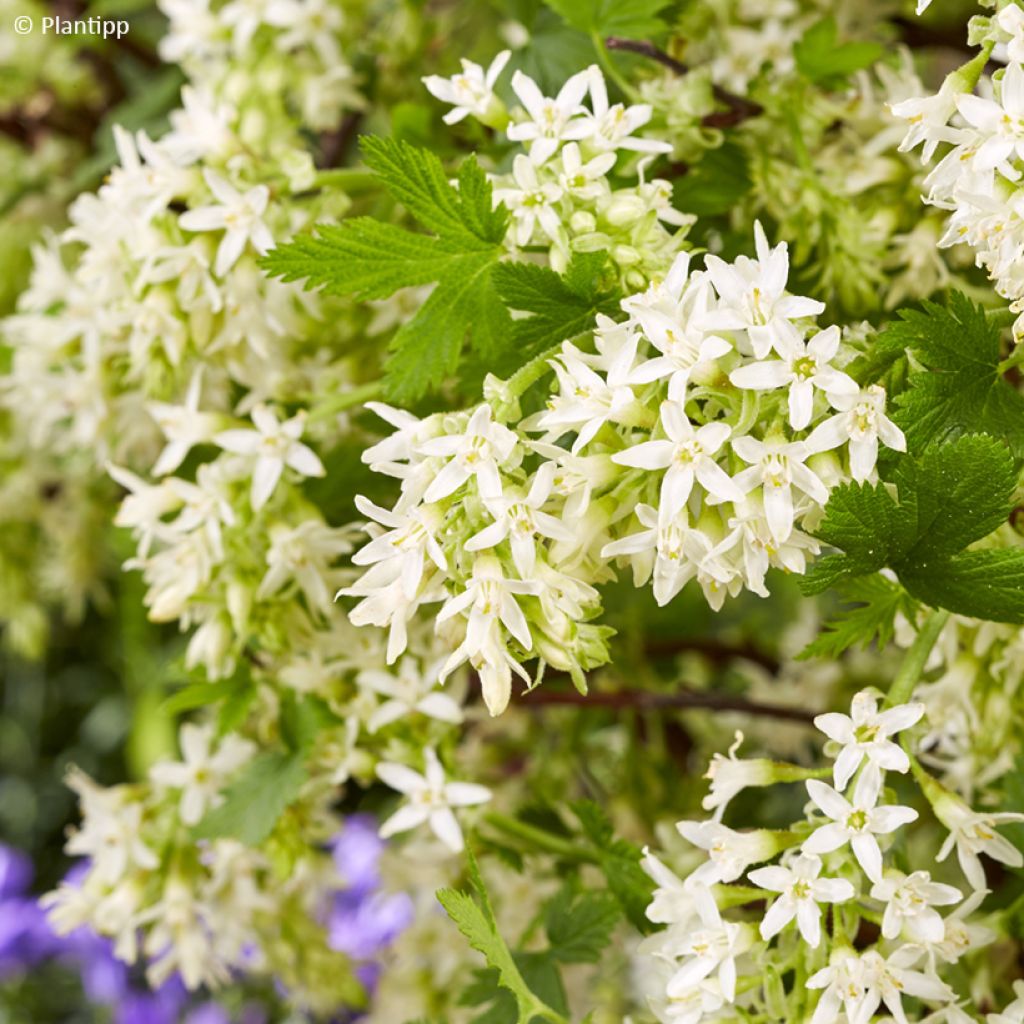

Ribes sanguineum Oregon Snowflake
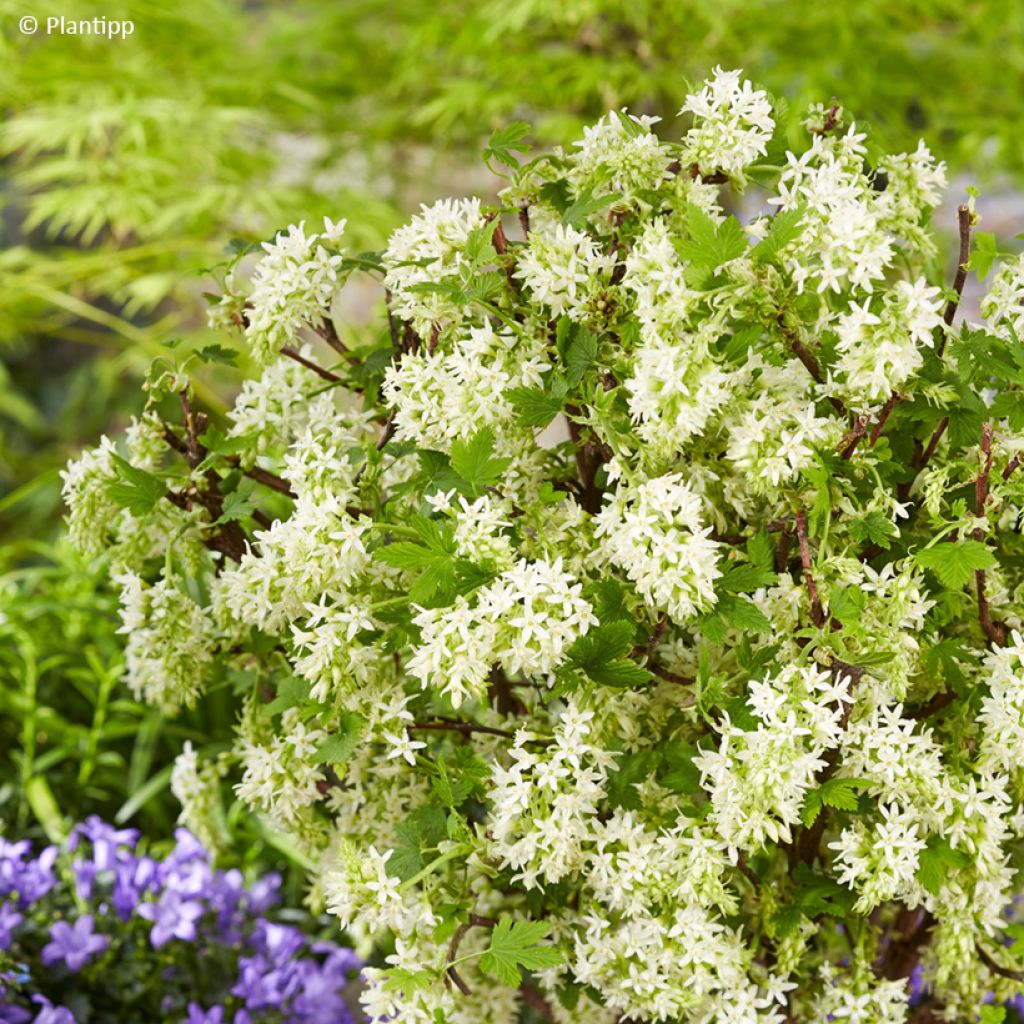

Ribes sanguineum Oregon Snowflake
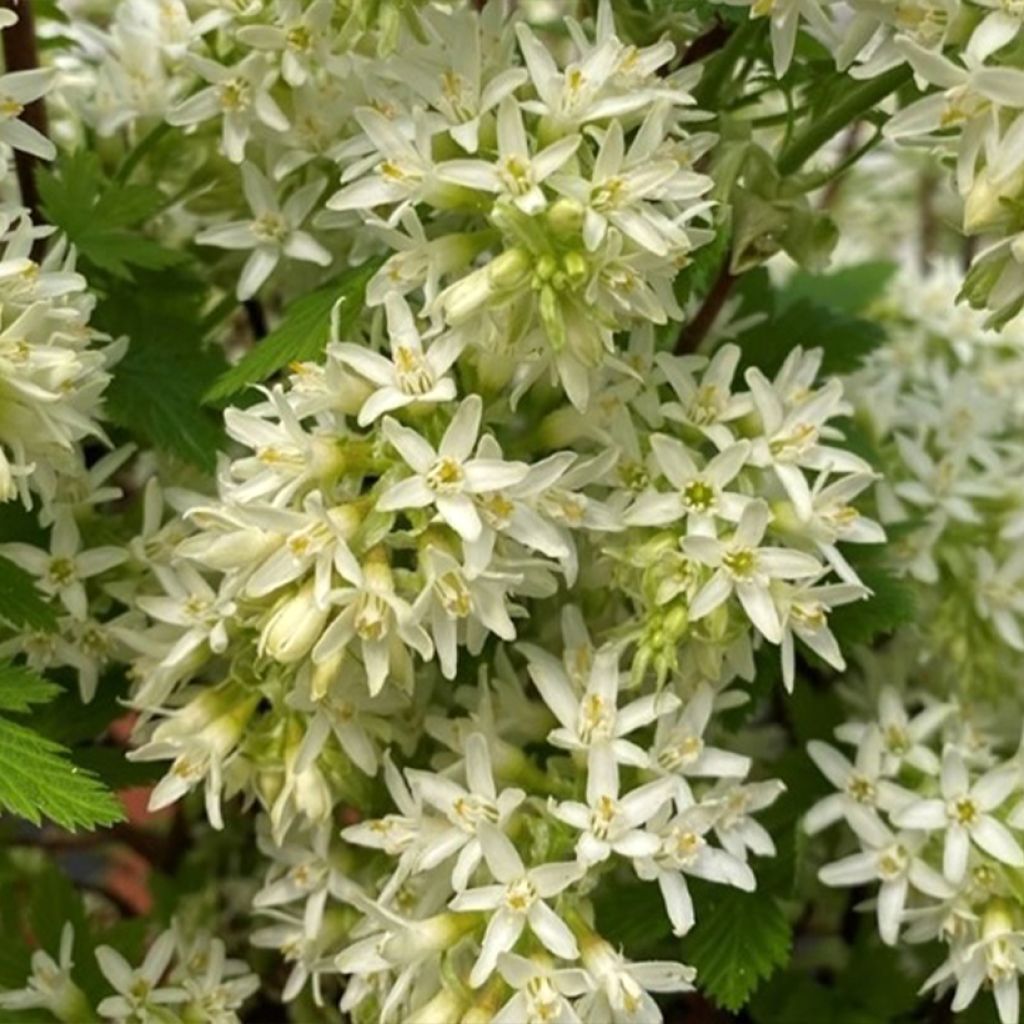

Ribes sanguineum Oregon Snowflake
Ribes sanguineum Oregon Snowflake
Ribes sanguineum Oregon Snowflake
Flowering Currant, Red-flowering Currant
This item cannot be shipped to the selected country
Delivery charge from €5.90
More information
Schedule delivery date,
and select date in basket
This plant carries a 24 months recovery warranty
More information
We guarantee the quality of our plants for a full growing cycle, and will replace at our expense any plant that fails to recover under normal climatic and planting conditions.
From €5.90 for pickup delivery and €6.90 for home delivery
Express home delivery from €8.90.
Does this plant fit my garden?
Set up your Plantfit profile →
Description
Ribes sanguineum 'Oregon Snowflake' is a variety of flowering currant bush that will charm with its small size and generous white flowering. Its palmate, finely incised and toothed foliage further enhances the elegance of this small bush. It blooms for several weeks in spring, and its fluffy flower clusters attract many pollinators. The foliage gives off a sweet blackcurrant aroma, which earned it its other name "False Blackcurrant". Place it in a beautiful pot on your balcony or in a small flowering hedge, mixed with other flowering shrubs.
The 'Oregon Snowflake' Flowering Currant, recently bred in the United States at Oregon State University, is a cultivar derived from Ribes sanguineum. It belongs to the Grossulariaceae family. The western United States is the birthplace of this particularly robust shrub species. In nature, it is found mainly on rocky and wooded slopes from southern California to the northwest United States. 'Oregon Snowflake', much more compact than the species, will reach about 1.20 m in height and spread 1.30 m in 7 years. Its flowers are white.
It has a bushy, compact growth habit. Its leaves are small (4 cm), divided into 5 to 7 intensely and finely toothed lobes. They have prominent veins and are light green They emit a blackcurrant scent when crushed. In April-May, after the leaves have emerged, clusters of pendant flowers measuring about 6 cm long appear along the branches. They are very numerous and composed of small pure white flowers. This nectar-rich, slightly fragrant flowering follows that of the Forsythia. This deciduous shrub's branches are leafless in winter.
Ribes sanguineum 'Oregon Snowflake' fits into any garden, even the smallest. It can be planted in a low hedge or a shrub border. Its charm is just as effective when grown in a container. In addition to its classic but charming association with Forsythias, you can also place it in a spring scene with Japanese quince trees, abelias, or even a plum tree with bush roses. Planted in groups of three or four mixed together, flowering currant bushes create an interesting effect at the back of perennial borders. Finally, to fully enjoy its flowers, you can cut flowering branches for your bouquets.
Report an error about the product description
Ribes sanguineum Oregon Snowflake in pictures
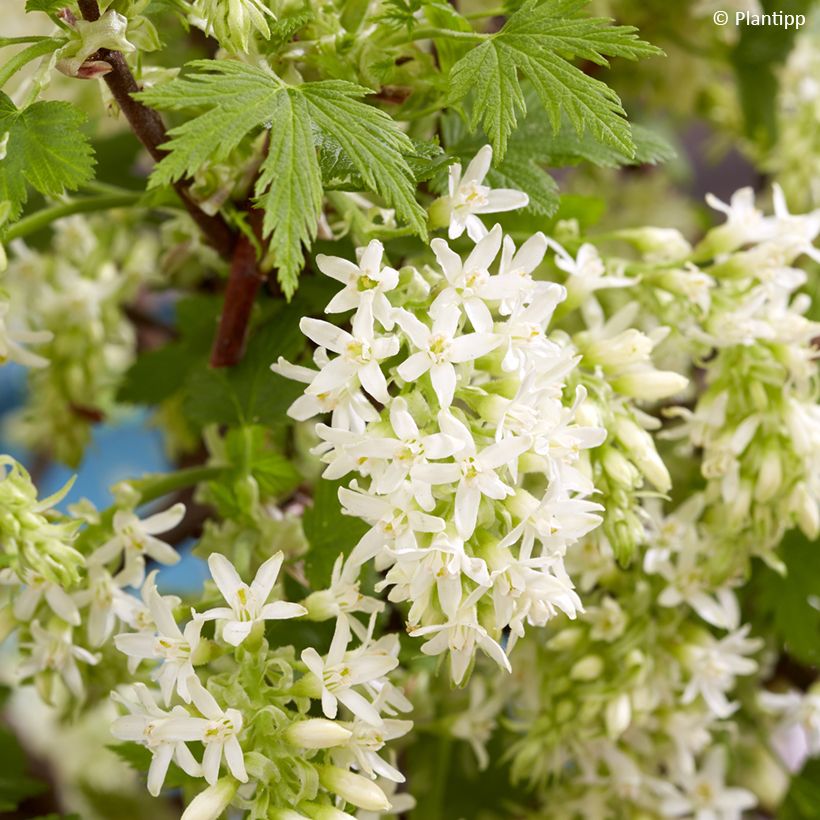

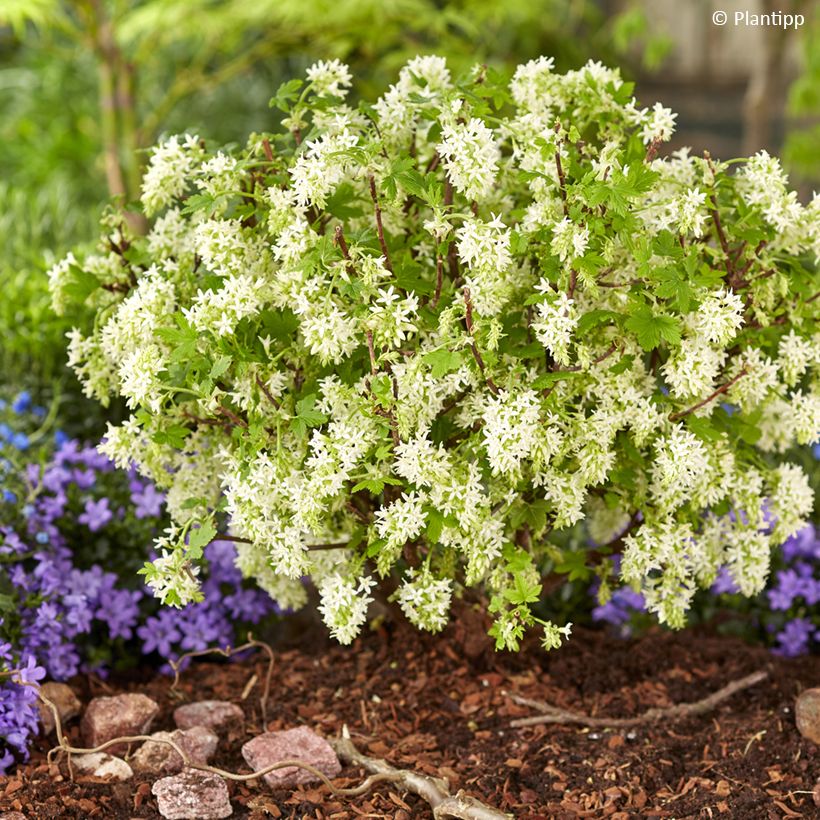

Plant habit
Flowering
Foliage
Botanical data
Ribes
sanguineum
Oregon Snowflake
Grossulariaceae
Flowering Currant, Red-flowering Currant
Cultivar or hybrid
Other Ribes - Flowering Currants
Planting and care
Plant the 'Oregon Snowflake' Flowering Currant in ordinary, deep soil without excess limestone, rich and moist. This bush will thrive in partial shade or in the sun, but in a non-scorching exposure. Pruning is not necessary, except to remove dead wood or correct a slightly sparse habit. The branches should be pruned back by one-third of their size, after flowering. When planting, you can bury part of the collar to promote good rooting.
Planting period
Intended location
Care
This item has not been reviewed yet - be the first to leave a review about it.
Hedge shrubs
Haven't found what you were looking for?
Hardiness is the lowest winter temperature a plant can endure without suffering serious damage or even dying. However, hardiness is affected by location (a sheltered area, such as a patio), protection (winter cover) and soil type (hardiness is improved by well-drained soil).

Photo Sharing Terms & Conditions
In order to encourage gardeners to interact and share their experiences, Promesse de fleurs offers various media enabling content to be uploaded onto its Site - in particular via the ‘Photo sharing’ module.
The User agrees to refrain from:
- Posting any content that is illegal, prejudicial, insulting, racist, inciteful to hatred, revisionist, contrary to public decency, that infringes on privacy or on the privacy rights of third parties, in particular the publicity rights of persons and goods, intellectual property rights, or the right to privacy.
- Submitting content on behalf of a third party;
- Impersonate the identity of a third party and/or publish any personal information about a third party;
In general, the User undertakes to refrain from any unethical behaviour.
All Content (in particular text, comments, files, images, photos, videos, creative works, etc.), which may be subject to property or intellectual property rights, image or other private rights, shall remain the property of the User, subject to the limited rights granted by the terms of the licence granted by Promesse de fleurs as stated below. Users are at liberty to publish or not to publish such Content on the Site, notably via the ‘Photo Sharing’ facility, and accept that this Content shall be made public and freely accessible, notably on the Internet.
Users further acknowledge, undertake to have ,and guarantee that they hold all necessary rights and permissions to publish such material on the Site, in particular with regard to the legislation in force pertaining to any privacy, property, intellectual property, image, or contractual rights, or rights of any other nature. By publishing such Content on the Site, Users acknowledge accepting full liability as publishers of the Content within the meaning of the law, and grant Promesse de fleurs, free of charge, an inclusive, worldwide licence for the said Content for the entire duration of its publication, including all reproduction, representation, up/downloading, displaying, performing, transmission, and storage rights.
Users also grant permission for their name to be linked to the Content and accept that this link may not always be made available.
By engaging in posting material, Users consent to their Content becoming automatically accessible on the Internet, in particular on other sites and/or blogs and/or web pages of the Promesse de fleurs site, including in particular social pages and the Promesse de fleurs catalogue.
Users may secure the removal of entrusted content free of charge by issuing a simple request via our contact form.
The flowering period indicated on our website applies to countries and regions located in USDA zone 8 (France, the United Kingdom, Ireland, the Netherlands, etc.)
It will vary according to where you live:
- In zones 9 to 10 (Italy, Spain, Greece, etc.), flowering will occur about 2 to 4 weeks earlier.
- In zones 6 to 7 (Germany, Poland, Slovenia, and lower mountainous regions), flowering will be delayed by 2 to 3 weeks.
- In zone 5 (Central Europe, Scandinavia), blooming will be delayed by 3 to 5 weeks.
In temperate climates, pruning of spring-flowering shrubs (forsythia, spireas, etc.) should be done just after flowering.
Pruning of summer-flowering shrubs (Indian Lilac, Perovskia, etc.) can be done in winter or spring.
In cold regions as well as with frost-sensitive plants, avoid pruning too early when severe frosts may still occur.
The planting period indicated on our website applies to countries and regions located in USDA zone 8 (France, United Kingdom, Ireland, Netherlands).
It will vary according to where you live:
- In Mediterranean zones (Marseille, Madrid, Milan, etc.), autumn and winter are the best planting periods.
- In continental zones (Strasbourg, Munich, Vienna, etc.), delay planting by 2 to 3 weeks in spring and bring it forward by 2 to 4 weeks in autumn.
- In mountainous regions (the Alps, Pyrenees, Carpathians, etc.), it is best to plant in late spring (May-June) or late summer (August-September).
The harvesting period indicated on our website applies to countries and regions in USDA zone 8 (France, England, Ireland, the Netherlands).
In colder areas (Scandinavia, Poland, Austria...) fruit and vegetable harvests are likely to be delayed by 3-4 weeks.
In warmer areas (Italy, Spain, Greece, etc.), harvesting will probably take place earlier, depending on weather conditions.
The sowing periods indicated on our website apply to countries and regions within USDA Zone 8 (France, UK, Ireland, Netherlands).
In colder areas (Scandinavia, Poland, Austria...), delay any outdoor sowing by 3-4 weeks, or sow under glass.
In warmer climes (Italy, Spain, Greece, etc.), bring outdoor sowing forward by a few weeks.

































